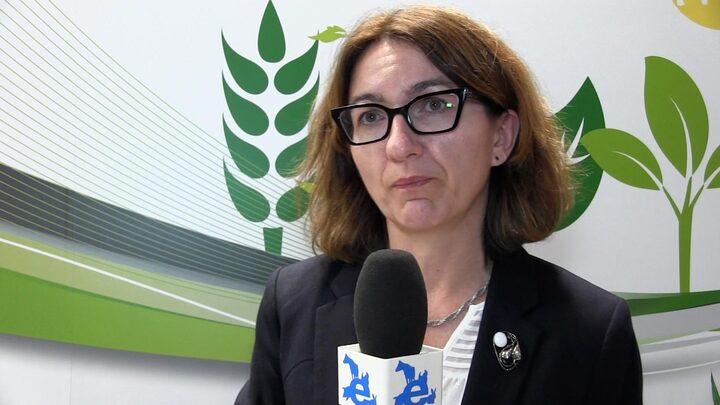Explore all the information on
Poultry nutrition - Other additives
Alternative feed additives have promising importance in broiler production due to the ban on the use of certain antibiotics. The most used antibiotic alternatives in broiler production are phytogenics, organic acids, prebiotics, probiotics, enzymes, and their derivatives. Antibiotic alternatives have been reported to increase feed intake, stimulate digestion, improve feed efficiency, increase growth performance, and reduce the incidence of diseases by modulating the intestinal microbiota and immune system, inhibiting pathogens, and improving intestinal integrity. Simply, the gut microbiota is the target to raise the health benefits and growth-promoting effects of feed additives on broilers. Therefore, naturally available feed additives are promising antibiotic alternatives for broilers.
I. INTRODUCTION Growing emphasis on environmental regulation requires global animal production to adopt strategies like feeding low CP diets to minimize nitrogen excretion. However, in some of the animal feeding studies, lowering dietary CP beyond a certain level showed undesirable effects on growth performance and carcass quality of broilers. A number of explanatory approaches is being debated as the possible reasons for the consequences of lowering dietary CP on broiler...
Comments : 0
Recommendations: 4
I. INTRODUCTION Crude protein-reduced broiler diets have the potential to provide tangible advantages in respect of economics, bird welfare, flock health and the environment. Moderate reductions in dietary crude protein (CP) levels can be achieved without compromising broiler performance when coupled with judicious synthetic amino acid inclusions. However, there appears to be a threshold where further CP reductions negatively influence performance, especially FCR and this is...
Comments : 0
Recommendations: 1


Mycotoxin Testing in the Feed Chain: A Risk Prevention Strategy for Raw Material Suppliers, Grain Storage Facilities and Processors, and Feed Manufacturers
Suggested link
Yeast cell wall (YCW) fractions have proven effective in reducing the incidence of necrotic enteritis induced by Clostridium perfringens. Dietary supplementation with YCWs stimulates the systemic innate immune responses of broiler chickens, suggesting the role of these products in regulating immune homeostasis (Alizadeh et al., 2016). In a proposed mode of action of YCW on bacteria, the branched lateral chains of the mannan-oligosaccharides (MOS) in the YCW structure bind the bacteria and...
Comments : 0
Recommendations: 1
1. Introduction Commercial poultry production is associated with a variety of environmental, technological, nutritional and biological/internal stressors which are responsible for decreased productive and reproductive performance and compromised health [1,2]. A great body of recent information clearly indicates that very often overproduction of free radicals, compromised antioxidant defences and oxidative stress are the leading causes of the detrimental consequences of...
Comments : 0
Recommendations: 0
I. INTRODUCTION Food waste refers to “the discarding or alternative (non-food) use of food that was fit for human consumption - by choice or after the food has been left to spoil or expire as a result of negligence” (FAO, 2015). It is estimated that the global economic loss caused by food waste is US$ 1 trillion annually. The wasted amount of cereals, root crops, fruits and vegetables, fish, oilseeds, meat and dairy products in the food industry has been estimated to...
Comments : 6
Recommendations: 1
Robert Alber, Vice President of Animal Nutrition at AlzChem, introduces Creamino®. Creatine is a natural molecule in the organism of humans and animals that elevates creatine stores in the body, supplies energy, and brings multiples benefits to poultry nutrition...
...
Comments : 43
Recommendations: 11
.jpg&w=3840&q=75)

Candidate Genes Associated with Survival Following Highly Pathogenic Avian Influenza Infection in Chickens
Suggested link
Introduction The usage of antibiotics as a growth promoter is widely banned by European Union-wide in 2006 due to their side effects on animal health and their residues in meat for human health (EU-wide, 2005). Novel and beneficial feed additives including different dietary fibers with adequate amount promotes the growth performances and maintain their immune and gut health (Jha et al., 2020; Jha and Mishra, 2021). Fenugreek is a popular medicinal plant grown in nature, mostly...
Comments : 2
Recommendations: 0
1. Introduction Commercial poultry farming is one of the fastest growing and most promising industries in Bangladesh. Intensive production system, however, depends solely on compound feeds and ingredients cost of which represents 65–70% of total production cost of the poultry farming. Animal originated feed protein materials such as fish meal and meat & bone meal are usually added to poultry feed as high protein sources. Driven by a booming need for livestock...
Comments : 0
Recommendations: 1


Mycotoxins semiannual survey of mycotoxin in feed in 2023 Taiwan - Second Half
Suggested link
Dr. Megan Edwards, Animal Nutrition Consultant at Integral Nutrition, goes deeper on the importance of Betaine as a multi-functional nutrient with numerous positive effects on animal performance....
Comments : 1
Recommendations: 8
Introduction: NSPase enzymes have become an integral part of commercial poultry feed for enhancing the efficiency of nutrient utilization by the birds, thereby reducing the cost of production and improving growth performance. The supplementation of phytase in broiler diets is also standard practice due to its proven performance and relatively low cost. Few studies have reported the contribution of xylanase in diets containing phytase. This study's primary objective was...
Comments : 1
Recommendations: 0
INTRODUCTION
Campylobacter is a leading cause of human gastroenteritis in the United States and worldwide (Corcionivoschi et al., 2012; Sibanda et al., 2018). In the United States alone, the Centers for Disease Controls and Prevention (CDC) estimates an annual 1.3 million cases occurring per year (Centers for Disease Control and Prevention [CDC], 2018). From 1999 to 2008, Campylobacter was estimated to cause an annual 8,463 hospitalizations and 76 deaths in the...
Comments : 0
Recommendations: 0
Intensive farming is drastically increasing yearly in South East Asia to comply with the growing demand of animal protein of the region. Intensive farming has been possible worldwide thanks to the genetic improvements and technologic and productive investments done, which have allowed to reduce the breeding period while increasing the benefits. Animals are under a high pressure in this production system to achieve the desired productive parameters, which makes them more sensible to the...
Comments : 7
Recommendations: 4
Necrotic enteritis (NE) is one of the most important diseases of the world broiler industry which costs over six billion dollars annually. There has been a concerted effort to control and minimise the effects of NE that have arisen since the EU ban of in-feed antibiotics in the poultry industry. Organic acids have been used as alternatives to in-feed antibiotics for maintaining good gut health of poultry by suppressing the growth of pathogenic bacteria, resulting in improved performance...
Comments : 0
Recommendations: 1
From 2Q onwards, the chemical industry upward trend was verified as a set one. Prices of more than 40 critical chemical raw materials showed an increase. At that time, there were also some raw materials with market prices falling. As of May 20, the market for...
Comments : 0
Recommendations: 4


Digestible lysine requirements of male broilers from 1 to 42 days of age reassessed
Suggested link
1. Introduction Carotenoids are natural pigments which are responsible for yellow to red colour observed in plants and vegetables (Mortensen, 2006). Carotenoids are important for its various roles in human and animals, these include immune functions, decrease in the risk of disease and antioxidant function (Johnson, 2002; Rao & Honglei, 2002; Hinds et al., 1997). There are over 700 carotenoids (Junpatiw et al., 2013); one of which is the β-carotene. β-carotene can...
Comments : 0
Recommendations: 0
Evidence of the development of antibiotic resistant strains of bacteria that are pathogenic to humans has mounted over recent decades; and the practice of using sub-therapeutic levels of antibiotics as growth promoters (AGP) in livestock production has been heavily implicated in this resistance. Worldwide, this connection has led to erosion of consumer trust in agricultural practices that rely on this valuable medical resource. Increasingly, legislation is...
Comments : 17
Recommendations: 1
Introduction and Objectives Betaine (BET) acts as a methyl donor to convert homocysteine into methionine (MET), sparing both choline (CHOL) and...
Comments : 4
Recommendations: 1
The digestive system is in charge of transforming the feed into assimilable nutrients, a key process in commercial poultry farming to maintain health status and obtain good productive results. It also works as a selective barrier to protect the organism from harmful agents. Any disease that affects the function of the digestive system will lead to a loss of productive performance, such as growth retardation, poorer conversion rates and feed efficiency, and even high mortality. As an...
Comments : 0
Recommendations: 1


Mycotoxin Testing in the Feed Chain: A Risk Prevention Strategy for Raw Material Suppliers, Grain Storage Facilities and Processors, and Feed Manufacturers
Suggested link
Thanks to our excellent speakers Prof. Dr. Richard Ducatelle from Ghent University and Dr. Juha Apajalahti from Research Centre Alimetrics the webinar organized on the 20th of April has proved a success. We’ve learnt a lot about the...
Comments : 0
Recommendations: 1
Dietary energy available to animals is key to formulating feed as it is required for all aspects of animal life. In poultry, apparent (AME) and true (TME) metabolisable energy (ME) values have been developed for feed formulation with or without correction for nitrogen balance. Over the past 50 years, the accuracy of ME systems has been an ongoing debate and the data produced from different bioassays have been found not to be comparable (Farrell, 1999). Overall, the ingredient matrix ME...
Comments : 0
Recommendations: 1

























.mp4&w=3840&q=75)






